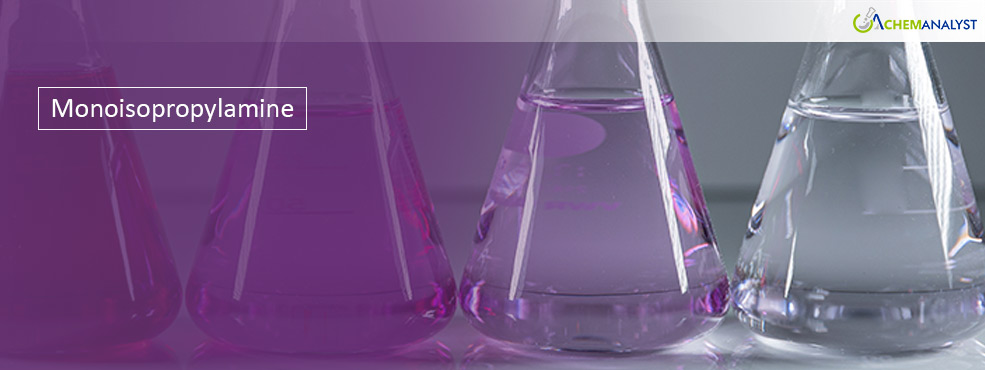Welcome To ChemAnalyst

The Monoisoproplyamine (MIPA) market witnessed a slight upward trend in the USA market in February 2025. The prices increased by 0.6% as compared to the previous month. The slight rise in the prices was supported by uncertainties in trade dynamics driven by 10% tariffs imposed by US President Donald Trump on all Chinese products. Domestic production remained resilient ensuring a consistent supply of MIPA in the market. With trade uncertainties looming in the market, the prices fluctuated in an upward direction amid steady demand from downstream pharmaceutical and agrochemical sectors. Consistent demand from downstream sectors and disrupted trade flows pushed up the prices.
Moving forward, in the coming months that is March and April, the prices are expected to increase owing to the spring plantation season driving the demand for herbicides like Atrazine which may drive the consumption of MIPA in the USA market. However, trade disruptions could lead to excess supply domestically potentially stabilizing the prices. China’s tit-for-tat import taxes on some American goods are expected to come into effect from 10th March 2025 which may increase the import cost for various chemicals and crops like wheat, corn, and soybeans indirectly impacting the demand for agrochemicals and may also impact the prices of MIPA and downstream end-user products.
In February 2025, the supply dynamics of MIPA remained stable in the domestic market supported by steady feedstock Ammonia prices. However, rising raw material Isopropanol costs increased the effective production costs driving the prices of MIPA higher in the market. Supply chain adjustments were necessary to balance the shifting trade flows with manufacturers exploring other significant export markets. While domestic manufacturing sustained output, trade policies introduced new challenges. US tariffs on Chinese agrochemical imports raised costs for key herbicides and agrochemicals increasing reliance on domestic alternatives. The long-term supply outlook will depend on feedstock cost fluctuations, trade policy developments, and shifts in domestic production.
On the demand front, the pharmaceutical sector witnessed declined market activities due to a sharp decline in healthcare and pharma funding which fell by 85.63% compared to the previous month. Reduced investment in drug development and manufacturing slowed procurement of key chemical intermediates including MIPA. However, early-stage funding sustained some demand for intermediates. While the demand for MIPA from the pharmaceutical sector remained unimpressive, the agrochemical sector demand remained firm driven by increased corn and soybean acreage. MIPA consumption remained robust due to the strong global demand for weed management solutions. Overall, the demand for MIPA was driven by the agrochemical sector pushing the demand dynamics in an upward direction.
We use cookies to deliver the best possible experience on our website. To learn more, visit our Privacy Policy. By continuing to use this site or by closing this box, you consent to our use of cookies. More info.
